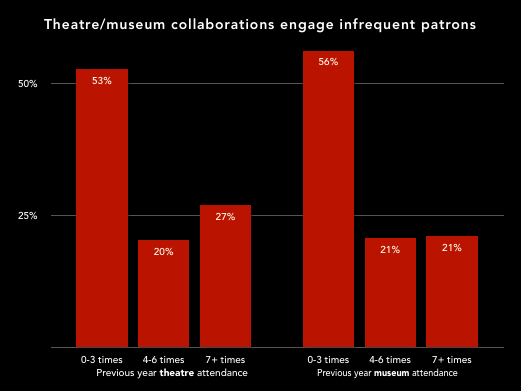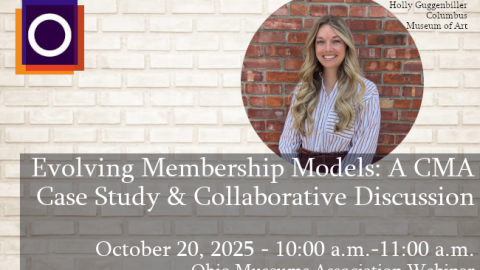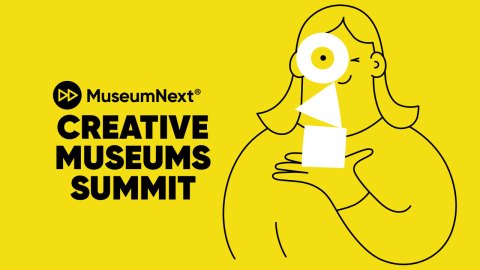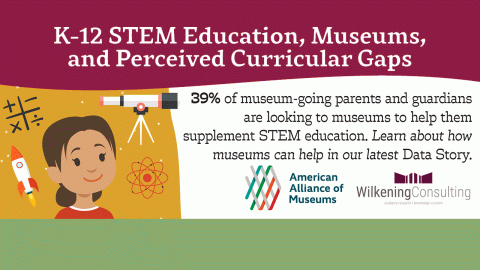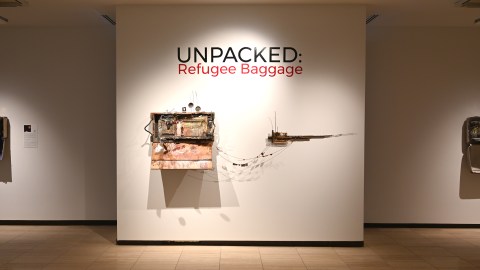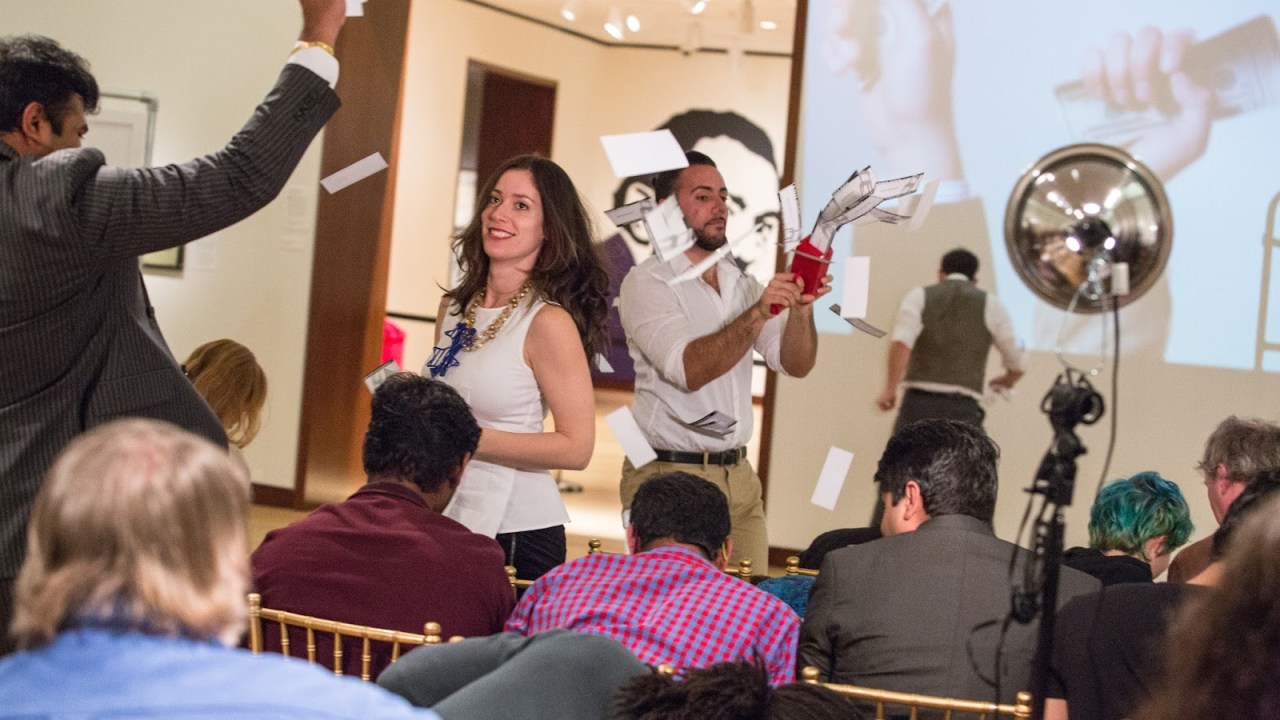
One way museums can court new audiences is to incorporate other forms of storytelling into their mix. Combining museum experiences with poetry jams, zines, dance, music and other formats can bring potential new fans into the museum while expanding the horizons of folks who already love our work. Today’s guest post, by members of the Bated Breath Theatre Company based in Hartford, Connecticut, describes one such mash-up: that brings immersive theatre into the museum. And (bonus) they share data on how their collaboration with the New Britain Museum of American Art actually cross-fertilized their audiences.
Most Bated Breath performances start before the “play” starts, so in our participatory play Beneath the Gavel about the art market, upon arrival at our performance space in The New Britain Museum of American Art the audience had to, in order to receive an auction paddle and an auction book that doubled as a program, register for the auction.
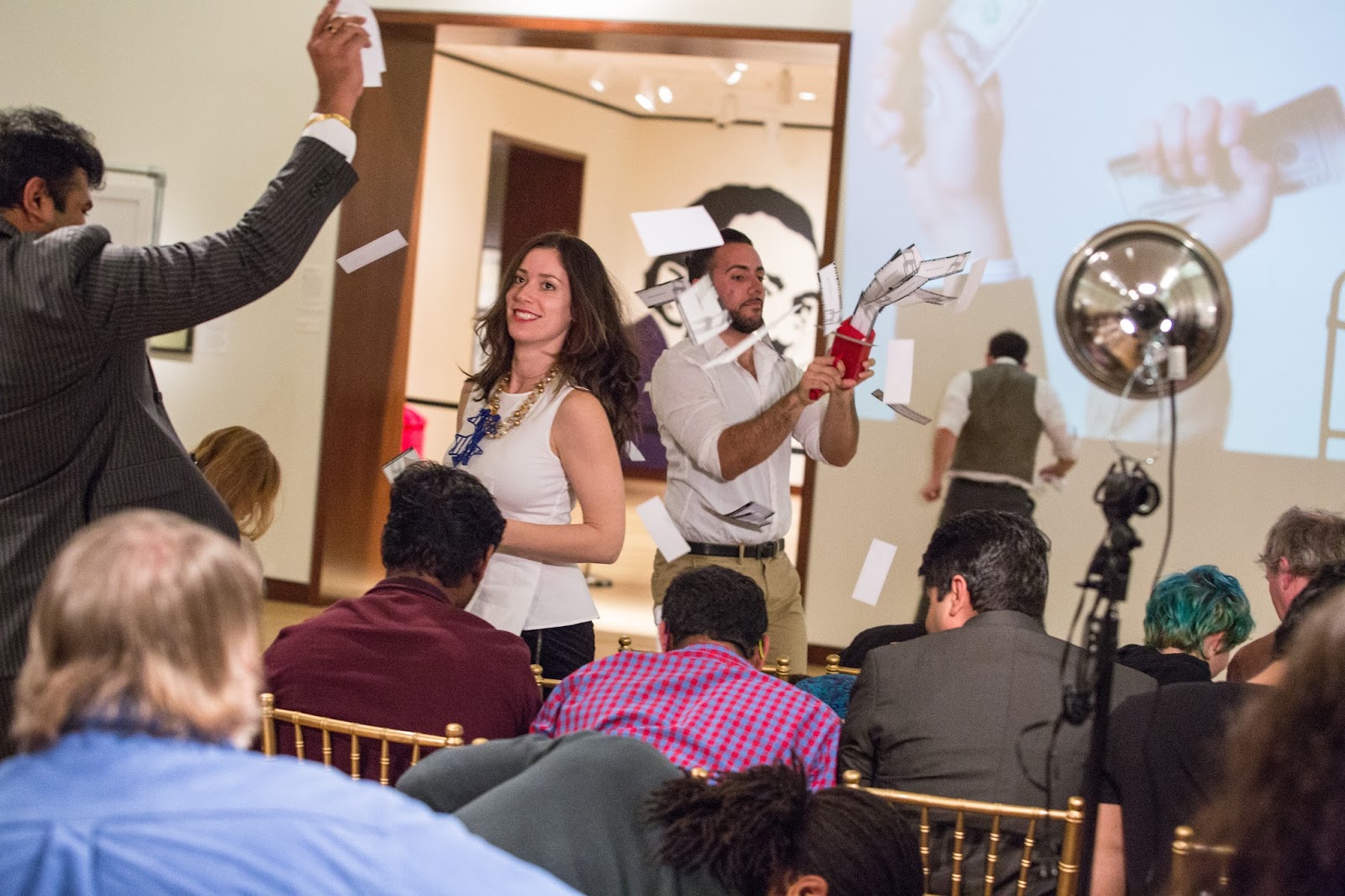 |
| Beneath the Gavel, New Britain Museum of American Art, Photo: Will Gangi |
Bated Breath, like most theatres, traditionally struggles to collect information about their audiences, so we embedded some simple survey questions within the auction registration process. This article shares our insights from the data about our 4 evening performances and one of our matinee performances, all of which were packed houses. (One matinee performance was for students from the Greater Hartford Academy of the Arts, but the students were delayed in arrival and we had to skip the registration portion of the play.)
We wanted to know whether our audience were regular supporters of our company or of the Museum, and we learned that most were new to Bated Breath and 40% were new to the Museum. And, critically, while some people traveled great distances to see the performance for a personal reason, two-thirds of the first time visitors to the Museum were Connecticut residents and therefore a part of the Museum’s target market.
Almost three quarters of the audience was having their first Bated Breath experience. Forty percent of the attendees at “Beneath the Gavel” were on their first visit to the New Britain Museum of American Art, and two-thirds of those (not shown) were Connecticut residents. We also saw that our performances engaged infrequent patrons. More than half of the attendees had attended theatre performances or visited museums three times or less in the previous year. (For about 15% of our audience, this was their first visit to a museum or a theatre performance in at least a year):
More than half of “Beneath the Gavel” participants had never or only infrequently attended theatre or visited museums in the year prior.
We did ask some questions about how people learned about the performance, but our multiple choice answers didn’t correctly anticipate the audience’s responses so those answers weren’t very useful. In particular, we did not place any questions about the role of open rehearsals at the museum in promoting the show. For example, one Museum member told us on opening night that she had seen the show advertised in the museum’s newsletter, loved theatre and thought it interesting, but decided that the ticket price was too high. Then, on a regular visit to the Museum, she stumbled upon an open rehearsal for the piece and was hooked. So many people told us similar stories verbally that we concluded our multiple choice answers were not useful. (Next time we embed a survey into the play, we’ll be sure to start the analysis earlier so we can improve the questions as the play’s run continues.)
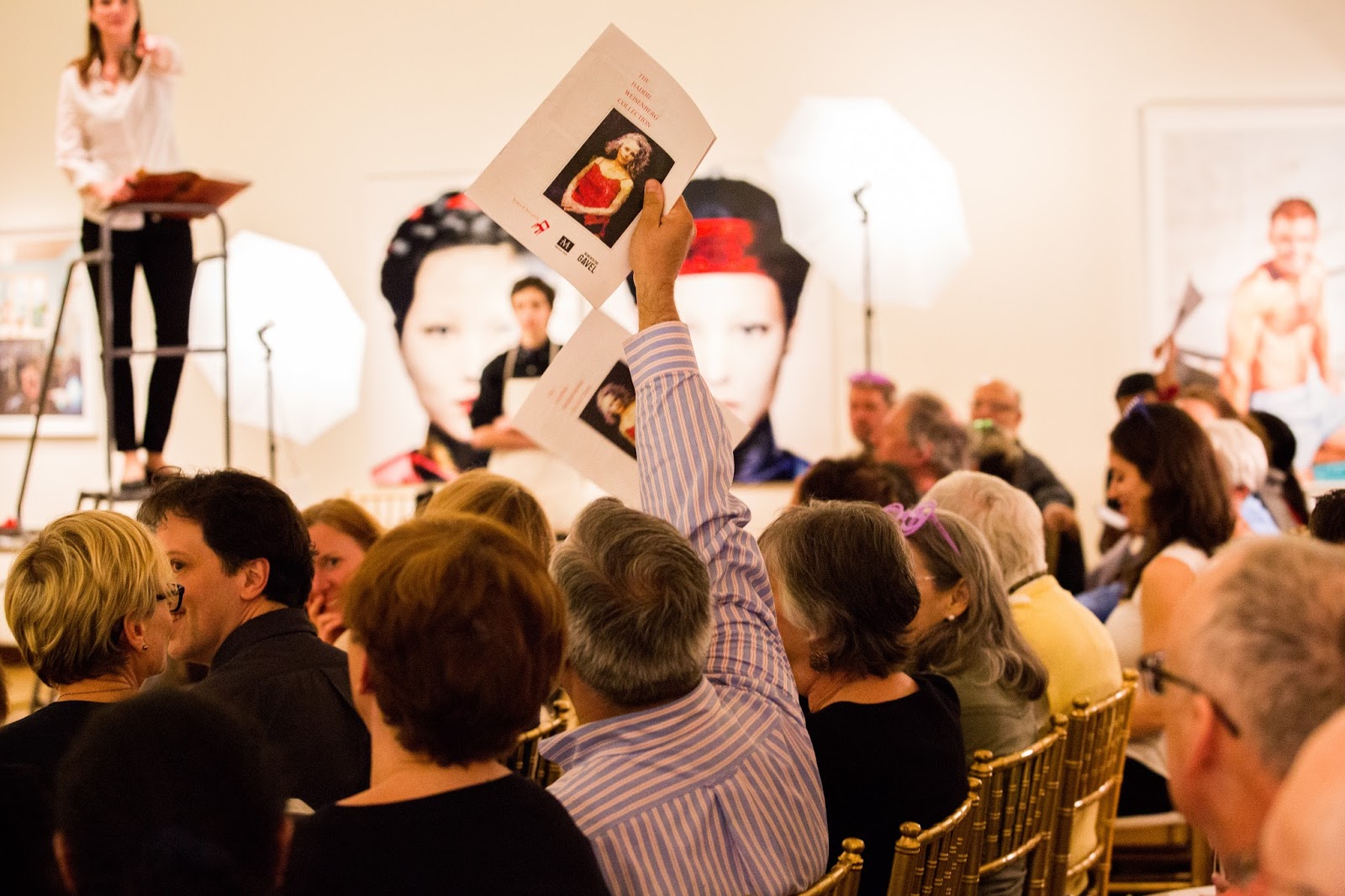 |
| Beneath the Gavel, New Britain Museum of American Art, Photo: Will Gangi |
One fascinating thing we discovered in the data was about how different the audiences between the performances were, and we think this data has some subtle but profound implications for how museums should schedule us in the future. For example, we had only one public matinee performance, held on a Saturday afternoon. We immediately saw that this audience was different: the audience was older and was three quarters women. And the surveys revealed a different history of relating to the arts:
Of all our performances, this audience was the least likely to be on their first visit to the New Britain Museum of American Art (24%) and the least likely to be on their first visit to a museum in the last year (9%). This audience was the most likely out of all of our performances to be on at least their 7th visit to a museum this year and the most likely to be on at least their 7th theatre attendance this year. (Despite this depth of arts engagement, this audience was also the least likely to have been familiar with Bated Breath.)
We think this means – and the anecdotal audience comments back this up – that the matinee performances attracted theatre lovers and the museums’ most dedicated supporters, particularly those who were theatre lovers. This one public matinee performance introduced an audience with a deep passion for theatre to our unique brand of art and was received as a huge gift to the museum’s most dedicated supporters.
In sum, we found that when museums and theatre work together, they produce art engagement that is greater than what either can do alone. And we discovered powerful evidence that some of the subtle scheduling decisions can unlock even greater successes. We’re looking forward to applying some of these lessons to our next theatre collaboration with the museum world.
This post originally appeared on 8/25/2016 on the Bated Breath blog, titled “When museums and theatre work together, the result is more than the sum of the partners.” The Bated Breath website profiles a number projects with museums, such as About Freedom: In 3 Acts, created in collaboration with the Amistad Center for Arts and Culture, and the Toulouse-Lautrec Project at the Wadsworth Atheneum. On that site you can also find press coverage of the off-Broadway debut of Beneath the Gavel featured in Forbes, American Theater, Artsy and other publications.


